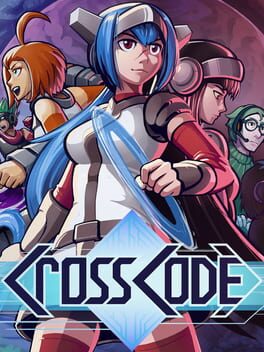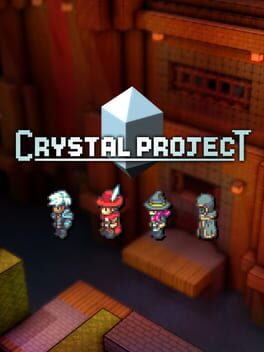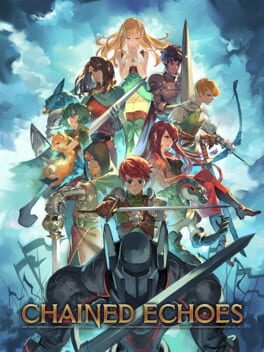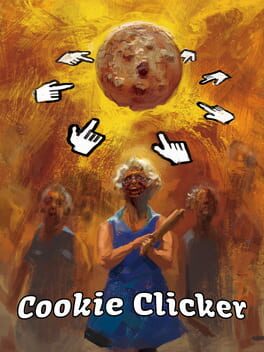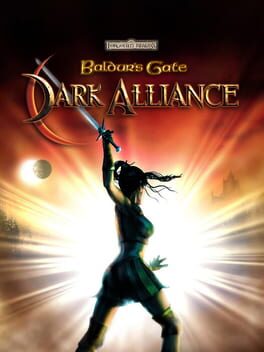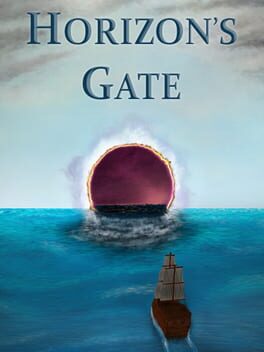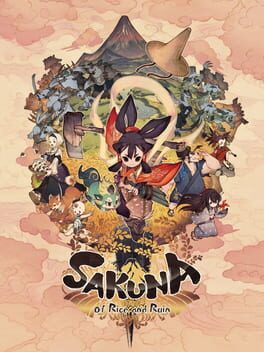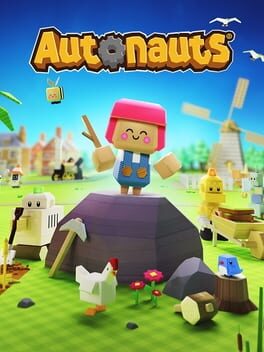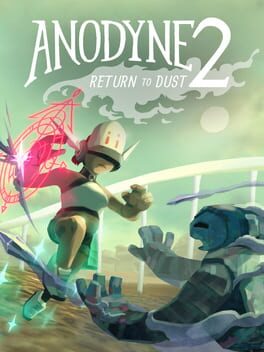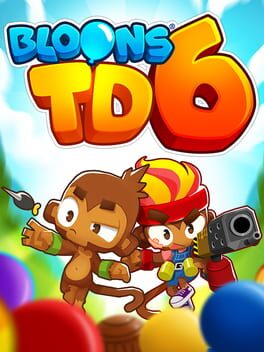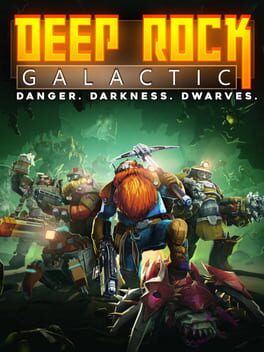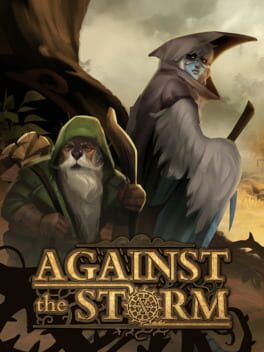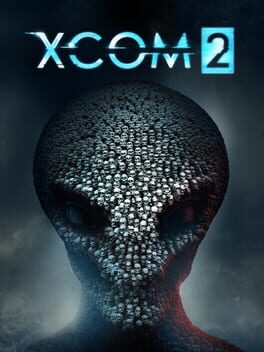thunderfunking
2018
Don't be fooled by the screenshots - this looks more arcane than it actually is. It's a tightly-designed, fresh take on the adventure puzzler. The combat is snappy and dynamic, but forgiving. The puzzles are rich, even if a bit top-heavy - you might often walk into a room and mumble "oh jesus" until you make sense of the noise. The dialogue is stunningly well-written; if you've spent time in MMOs, there's a lot of smart jokes and banter to catch. I even found myself invested in the story.
80 hours in, I did eventually get bored and never beat the game. The puzzles and dungeon combat just became too much of a chore. I knew what I needed to do and how to beat them, but felt exhausted when I walked into another huge room full of triangular blocks waiting for me to route a pinball for an hour. that's okay, though. I still had a blast with this game and feel glad for the time I spent with it.
80 hours in, I did eventually get bored and never beat the game. The puzzles and dungeon combat just became too much of a chore. I knew what I needed to do and how to beat them, but felt exhausted when I walked into another huge room full of triangular blocks waiting for me to route a pinball for an hour. that's okay, though. I still had a blast with this game and feel glad for the time I spent with it.
2022
I've spent the last decade scrawling the trenches of Steam and Itch for a JRPG like this: the true gem in the rough, the solo indie project from someone who "gets it" on every level. Visually it looks like ass and there's minimal story or dialogue. The mechanics, though, are perfectly tuned and the world design is rich, expansive, and clever.
The combat feels strategic and fair because the numbers and outcomes are transparent, including the enemy's skills and upcoming action. It takes some time to learn its rules for timing and execution, but it's all deterministic and allows you to plan several moves ahead. The job system has the best parts of FFT, distilled down to unique skillsets with fascinating synergies and equipment-based builds. There are incentives to keep you experimenting, with gimmick bosses and enemies that will push you to review your builds. I spent most of the game feeling challenged, with many bosses demanding 3 or 4 attempts to defeat, yet rarely feeling impossible at my current gear or character level. Impressive, given the non-linear open world.
The world is huge and dense, leveraging voxels for verticality and depth in every zone. It even has some clever technical tricks up its sleeve in how it manages camera angles and cutaways when you're underground. The forced camera perspective takes some getting used to, but once I saw how many secrets and puzzles leverage this perspective, I began to appreciate it. This world simply wouldn't work if you could rotate the camera. There are secrets hidden everywhere you go, which speaks to another fundamental of good JRPGs: hunting for treasure. There are so many chests to find, and the rewards are worth the effort.
The constant platforming is easily the most controversial design choice. There are tight platforming segments packed throughout the game and many of them are not optional. Personally, I love jumping puzzles, but this may be more punishing than it needs to be. The placement of water and spikes is a concession to the need for a reset mechanism, but it feels silly. I found myself intentionally diving into spikes in order to respawn at my launch point. Still, I love the sweaty palms anxiety of these puzzles.
Otherwise, it's a world of subtle design, full of clever paths and shortcuts and sequence breaks to discover everywhere you go. As soon you've developed an understanding for what's possible, you'll get a new tool that causes you to reconsider everywhere you've been. But you rarely find yourself looking at an arbitrarily blocked path thinking "oh, I'll need a new item for that".
The artwork, music and aesthetics vary between acceptable and unpleasant because it's largely stock / CC / marketplace work. The choices are at least consistent, and there's an emphasis on simplicity (e.g. many animations are simple squash and stretch). My only technical complaint would be that, given the amount of 3D platforming, I wish the main character weren't a 2D sprite or there were more cues for depth.
The UI is better than it has any right to be. An under-appreciated fact of JRPGs is that half of the game is spent in menus, reviewing stats and equipment. Most indie games fall flat in this regard, but it's clear the author understood the importance of fluid, fast navigation through the interface. The biggest nuisance has to be switching between movement modes, but this is mostly an endgame frustration. I strongly recommend going into the assist menu and enabling the enhanced home point!
This is an incredible achievement. I'm grateful for the experience and I feel like I can finally leave this genre behind, knowing that someone finally did it right.
The combat feels strategic and fair because the numbers and outcomes are transparent, including the enemy's skills and upcoming action. It takes some time to learn its rules for timing and execution, but it's all deterministic and allows you to plan several moves ahead. The job system has the best parts of FFT, distilled down to unique skillsets with fascinating synergies and equipment-based builds. There are incentives to keep you experimenting, with gimmick bosses and enemies that will push you to review your builds. I spent most of the game feeling challenged, with many bosses demanding 3 or 4 attempts to defeat, yet rarely feeling impossible at my current gear or character level. Impressive, given the non-linear open world.
The world is huge and dense, leveraging voxels for verticality and depth in every zone. It even has some clever technical tricks up its sleeve in how it manages camera angles and cutaways when you're underground. The forced camera perspective takes some getting used to, but once I saw how many secrets and puzzles leverage this perspective, I began to appreciate it. This world simply wouldn't work if you could rotate the camera. There are secrets hidden everywhere you go, which speaks to another fundamental of good JRPGs: hunting for treasure. There are so many chests to find, and the rewards are worth the effort.
The constant platforming is easily the most controversial design choice. There are tight platforming segments packed throughout the game and many of them are not optional. Personally, I love jumping puzzles, but this may be more punishing than it needs to be. The placement of water and spikes is a concession to the need for a reset mechanism, but it feels silly. I found myself intentionally diving into spikes in order to respawn at my launch point. Still, I love the sweaty palms anxiety of these puzzles.
Otherwise, it's a world of subtle design, full of clever paths and shortcuts and sequence breaks to discover everywhere you go. As soon you've developed an understanding for what's possible, you'll get a new tool that causes you to reconsider everywhere you've been. But you rarely find yourself looking at an arbitrarily blocked path thinking "oh, I'll need a new item for that".
The artwork, music and aesthetics vary between acceptable and unpleasant because it's largely stock / CC / marketplace work. The choices are at least consistent, and there's an emphasis on simplicity (e.g. many animations are simple squash and stretch). My only technical complaint would be that, given the amount of 3D platforming, I wish the main character weren't a 2D sprite or there were more cues for depth.
The UI is better than it has any right to be. An under-appreciated fact of JRPGs is that half of the game is spent in menus, reviewing stats and equipment. Most indie games fall flat in this regard, but it's clear the author understood the importance of fluid, fast navigation through the interface. The biggest nuisance has to be switching between movement modes, but this is mostly an endgame frustration. I strongly recommend going into the assist menu and enabling the enhanced home point!
This is an incredible achievement. I'm grateful for the experience and I feel like I can finally leave this genre behind, knowing that someone finally did it right.
2022
By-the-numbers classic JRPG. Absolutely herculean, monumental effort for a mostly solo-dev project! 2022 has been a big year for the indie JRPG between this and Crystal Project.
Rich soundtrack and gorgeous art, but I didn't find anything to love in the characters. The combat has a few slight twists to enjoy, but the skills are painfully boring while encounters and enemy design are dead simple. The UI has a lot of friction in its map, inventory, and character management. Still had a nice time exploring the world, finding treasure, and loved its area-based quest board for leveling up.
Worth mentioning that I had to slog through serious bugs. I experienced softlocks or crashes about once per hour, seemingly at random. The autosave wasn't always recent, so I found myself habitually saving every minute to avoid losing progress. My 100% playthrough was about 50 hours, so this was a real tax on my patience.
Rich soundtrack and gorgeous art, but I didn't find anything to love in the characters. The combat has a few slight twists to enjoy, but the skills are painfully boring while encounters and enemy design are dead simple. The UI has a lot of friction in its map, inventory, and character management. Still had a nice time exploring the world, finding treasure, and loved its area-based quest board for leveling up.
Worth mentioning that I had to slog through serious bugs. I experienced softlocks or crashes about once per hour, seemingly at random. The autosave wasn't always recent, so I found myself habitually saving every minute to avoid losing progress. My 100% playthrough was about 50 hours, so this was a real tax on my patience.
2013
if you immerse yourself into this game -- and i mean total submersion, an unwavering commitment to efficient, effective cookie clicking -- you will come face-to-face with one of the primordial elements of Game. contained herein is the purest distillation of the Skinner box, that most animalistic, Pavlovian instinct buried inside each of us that lights up our synapses every time the number gets bigger. your eyes will reach superhuman attenuation to the slow pseudorandom fade-in of each precious Golden Cookie. you will turn the wiki upside down in a ravenous hunt for the power of cookie knowledge. you will experience billions of years of hunter-killer evolution bearing down on your left mouse button when you encounter your first Click Frenzy x Fever with its utterly broken, overpowered 5,439x cookie multiplier. in time, you will process all of this with the cool demeanor of a professional, unperturbed and unwavering in the quest for exponentiation.
yes, this is a profoundly stupid game, but it is no more absurd than any other game; it is simply honest in its embrace of numeric pornography
yes, this is a profoundly stupid game, but it is no more absurd than any other game; it is simply honest in its embrace of numeric pornography
a withered corpse of a game; the most barebones action RPG with bargain bin D&D packaging. this is a burnt steak without any sauce. this is an airport motel. this is a gift shop at a new jersey turnpike rest stop. which is to say: if you're a weary traveler with nowhere else to go, it might tide you over for a night. i mostly played it because i have covid and i just need buttons to push.
2020
It's a wonky little guy, but I had fun with it for a bit. Exploring the world gives you that distinct feeling of setting out on a brave expedition. It's kinda satisfying to trade up into better boats and a bigger fleet so you can haul more trade cargo.
But the star of the show is the class system for your characters. Leveling up feels great because you're progressing through this tree and long-term investing characters into certain skill paths. But once you have multiple classes learned, you can mix and match all the skills to create these delicious hybrids. I was ready to dump hundreds of hours into min-maxing all of my characters.
Unfortunately, the combat is fairly easy and the game doesn't seem to want to admit that land combat is its biggest strength. There just isn't much to explore on land - you'll end up fighting in just 3 or 4 different area types overall. Naval combat isn't great.
If you like tactical strategy RPGs, this is worth trying out. But it did leave me unsatisfied.
But the star of the show is the class system for your characters. Leveling up feels great because you're progressing through this tree and long-term investing characters into certain skill paths. But once you have multiple classes learned, you can mix and match all the skills to create these delicious hybrids. I was ready to dump hundreds of hours into min-maxing all of my characters.
Unfortunately, the combat is fairly easy and the game doesn't seem to want to admit that land combat is its biggest strength. There just isn't much to explore on land - you'll end up fighting in just 3 or 4 different area types overall. Naval combat isn't great.
If you like tactical strategy RPGs, this is worth trying out. But it did leave me unsatisfied.
At first glance this game might look silly or brainless, but Sakuna punches way above its weight. It's a strange, fascinating, easy-going experience, but peppered with pleasant challenge. It somehow scratches the itch for a comfy and intimate colony farming sim, while also operating as a satisfying platforming beat-em-up.
The farming consists of seasonal minigames, each with their own rituals for optimization. New systems get introduced with each harvest that keep the cycle feeling fresh. There's always just enough to remember and monitor that I never found myself doing everything perfectly - letting the water out soon enough, waiting for the right temperature to hull, bringing the ducks back inside when it sprouts. It feels great to see your character get buff when you do it all correctly.
The combat centers around this grapple hook that doubles as a generous dodge. You constantly sling back and forth throughout fights, set up combos in the air, and blast enemies into each other for big aoe damage. The tutorials aren't great and it might take a while to make sense of its quirks - some core mechanics don't get any explanation until 20 hours in. But it's worth the trouble - the loop is satisfying and reminiscent of Dragon's Crown or Odin Sphere.
There ends up being quite a bit of platforming in the level design, again centered on this grapple-dodge. It feels good to zip around the environments, but this is probably the jankiest mechanic of the game; there's too much guesswork involved in figuring out where you can latch on. Still, I was surprised at how much fun I was having even though I would often struggle to accurately attach onto ledges.
There's a million other tiny quirks and unpolished elements, but what's really holding this game back most is its size. Sakuna is begging for more than a 4-hut village and an archipelago of isolated combat zones. I want to survey the vast rice fields at the end of the game and watch my allies till the fields. As is, it just feels a little bit too small, too claustrophobic. My runner-up complaint is its resource variety and distribution; there's too much inventory noise for little meaningful impact.
I was surprised to realize I actually learned something about rice. Ten hours in I was getting excited for each new tutorial about the phases of growth, when to flood the fields, what type of fertilizer to use. It got me thinking about how important rice is - so many lives have been spent studying this one crop, thinking up new ways to cook and prepare it. There's so much cultural depth behind this one little grain. This game cares about rice, and it wants you to care, too.
The farming consists of seasonal minigames, each with their own rituals for optimization. New systems get introduced with each harvest that keep the cycle feeling fresh. There's always just enough to remember and monitor that I never found myself doing everything perfectly - letting the water out soon enough, waiting for the right temperature to hull, bringing the ducks back inside when it sprouts. It feels great to see your character get buff when you do it all correctly.
The combat centers around this grapple hook that doubles as a generous dodge. You constantly sling back and forth throughout fights, set up combos in the air, and blast enemies into each other for big aoe damage. The tutorials aren't great and it might take a while to make sense of its quirks - some core mechanics don't get any explanation until 20 hours in. But it's worth the trouble - the loop is satisfying and reminiscent of Dragon's Crown or Odin Sphere.
There ends up being quite a bit of platforming in the level design, again centered on this grapple-dodge. It feels good to zip around the environments, but this is probably the jankiest mechanic of the game; there's too much guesswork involved in figuring out where you can latch on. Still, I was surprised at how much fun I was having even though I would often struggle to accurately attach onto ledges.
There's a million other tiny quirks and unpolished elements, but what's really holding this game back most is its size. Sakuna is begging for more than a 4-hut village and an archipelago of isolated combat zones. I want to survey the vast rice fields at the end of the game and watch my allies till the fields. As is, it just feels a little bit too small, too claustrophobic. My runner-up complaint is its resource variety and distribution; there's too much inventory noise for little meaningful impact.
I was surprised to realize I actually learned something about rice. Ten hours in I was getting excited for each new tutorial about the phases of growth, when to flood the fields, what type of fertilizer to use. It got me thinking about how important rice is - so many lives have been spent studying this one crop, thinking up new ways to cook and prepare it. There's so much cultural depth behind this one little grain. This game cares about rice, and it wants you to care, too.
2019
You know that feeling you get in a game when you're not sure if you're going the right way? Like when you've managed to climb up some cliff and you're not quite out of bounds but you suspect this wasn't the intended path? That slight unease and mundane mystery is most of what I felt while playing this.
It's a unique experience, mashing together memories of early 3D collectathons with the intentionally vague, sometimes off-putting aesthetics of arthouse media. It's not an exciting game, but if you've got a bit of patience, it'll tickle your brain and stir some feelings.
It's a unique experience, mashing together memories of early 3D collectathons with the intentionally vague, sometimes off-putting aesthetics of arthouse media. It's not an exciting game, but if you've got a bit of patience, it'll tickle your brain and stir some feelings.
2018
2017
five hours in, i was really scratching my head as to how this has captured so much love. expectations are hard to control; i went into this knowing it's a lot of people's favorite game, or at least their favorite metroidvania. i pushed through because i'm tired of ten year-old kids looking sad when i tell them i haven't played this game.
it just doesn't feel good to move or interact, especially for the first 5-10 hours without upgrades. the default iframe window makes it possible to get full-combod between enemies and hazards. there is no parry, counter, or escape tool; the shitty dodge doesn't come until lategame. enemy attack animations generally lack unique telegraphs, and since most patterns lean heavily on RNG. you will die many times to unfortunate and unavoidable sequences. ironically, most of the bosses have the same set of attacks! in the end, most combat boils down to rapid zipping back and forth or the occasional pogo cheese for all the enemies that weren't given any vertical awareness.
navigating through the environment is clunky and the map is not polished to support rapid traversal. it's difficult to identify rooms from each other, and there are few landmarks to go by. you'll be checking the map constantly, which often means opening up the full menu to see other neighboring zones. this makes backtracking - the cornerstone of this whole genre - a chore, rather than a satisfying mastery of the environment. meanwhile, movement itself mostly boils down to spam dashing ad nauseum. dashing has a loud, poofy sound effect that quickly wears out its welcome when you're running from one end of a zone to another. after experiencing the pure delight of traversal in Ori 2, this was not a good time.
i love metroidvanias because they're one of the few genres that make you want to poke into every nook and cranny. i love looking at the map and seeing a little sliver of a room i haven't reached yet and scouring all the possible entrance areas. i love using all the late game tools to blast through the early zones that had given me trouble ten hours prior. Hollow Knight just doesn't have enough mastery over its own mechanics or design to provide that experience.
it's not bad. it's pretty decent! it's fine. really. it's. fine. the bugs-all-the-way-down theme is great and the NPCs all have excellent flavor. i'm being a little harsh because on this site, Hollow Knight is in the top 100 highest-rated games of all time - twice. but this genre has been done better before and since.
it just doesn't feel good to move or interact, especially for the first 5-10 hours without upgrades. the default iframe window makes it possible to get full-combod between enemies and hazards. there is no parry, counter, or escape tool; the shitty dodge doesn't come until lategame. enemy attack animations generally lack unique telegraphs, and since most patterns lean heavily on RNG. you will die many times to unfortunate and unavoidable sequences. ironically, most of the bosses have the same set of attacks! in the end, most combat boils down to rapid zipping back and forth or the occasional pogo cheese for all the enemies that weren't given any vertical awareness.
navigating through the environment is clunky and the map is not polished to support rapid traversal. it's difficult to identify rooms from each other, and there are few landmarks to go by. you'll be checking the map constantly, which often means opening up the full menu to see other neighboring zones. this makes backtracking - the cornerstone of this whole genre - a chore, rather than a satisfying mastery of the environment. meanwhile, movement itself mostly boils down to spam dashing ad nauseum. dashing has a loud, poofy sound effect that quickly wears out its welcome when you're running from one end of a zone to another. after experiencing the pure delight of traversal in Ori 2, this was not a good time.
i love metroidvanias because they're one of the few genres that make you want to poke into every nook and cranny. i love looking at the map and seeing a little sliver of a room i haven't reached yet and scouring all the possible entrance areas. i love using all the late game tools to blast through the early zones that had given me trouble ten hours prior. Hollow Knight just doesn't have enough mastery over its own mechanics or design to provide that experience.
it's not bad. it's pretty decent! it's fine. really. it's. fine. the bugs-all-the-way-down theme is great and the NPCs all have excellent flavor. i'm being a little harsh because on this site, Hollow Knight is in the top 100 highest-rated games of all time - twice. but this genre has been done better before and since.
2018
I was dubious at first. What's with 4-player co-op revival all of a sudden? This is just Left for Dwarves! But there's three elements that make this a special game.
The first is a phenomenal cave generator. It's not just about the excellent variety - it's quality. Most caves will have highly distinct, memorable setpieces that makes exploration exciting. The scale, terrain, and depth create awe-inspiring environments that repeatedly had my group saying "holy shit come look at this". These are fun spaces to explore with many moments of surprise and joy lurking around each corner.
Then there's the lighting. These caves are dark, and that's important for creating these moments of surprise. Specifically, the flare throwing mechanic is a constant source of delight - watching flares tumble around the landscape, seeing how far that hole goes down, or revealing enemies hidden in the crevices. You're throwing them constantly and it's a critical piece of the spelunking experience.
Lastly, the class skills offer just the right tools for exploration. Everyone's got their specialty and once everybody's gotten comfortable with their skillset, you feel like a well-oiled machine as you take turns building platforms, digging tunnels, setting up ziplines, and lighting up rooms. These mechanics feel good to use because of how great the cave generation is. That's the secret sauce of this game.
But it's not perfect. The sound design is frequently annoying; within the first hour I turned announcer + dwarf volume down to 5%. The enemy types are mostly uninspired - with a few BIG exceptions - but most of the time you're going to be fighting the same few crawdads. These issues are offset by good mission design and great randomized variations in cave hazards, which keep your focus elsewhere - but if you're looking for satisfying gunplay or tightly-tuned combat, that's not what this game does best.
My biggest issues are with the half-baked progression system. Seemingly half of the game locked out until you invest 20+ hours - and much of that is bound to individual character classes. The perks and skill/weapon upgrades feel like an afterthought. There isn't much customization to be done, even on the cosmetic front. You're always going to look and play pretty similar to the other dwarves, even with the dozens of beard types on offer.
Give it a few hours to warm up - find the class you like, unlock some of the basic skill upgrades and mission types, and then pull your buds together for a good time.
The first is a phenomenal cave generator. It's not just about the excellent variety - it's quality. Most caves will have highly distinct, memorable setpieces that makes exploration exciting. The scale, terrain, and depth create awe-inspiring environments that repeatedly had my group saying "holy shit come look at this". These are fun spaces to explore with many moments of surprise and joy lurking around each corner.
Then there's the lighting. These caves are dark, and that's important for creating these moments of surprise. Specifically, the flare throwing mechanic is a constant source of delight - watching flares tumble around the landscape, seeing how far that hole goes down, or revealing enemies hidden in the crevices. You're throwing them constantly and it's a critical piece of the spelunking experience.
Lastly, the class skills offer just the right tools for exploration. Everyone's got their specialty and once everybody's gotten comfortable with their skillset, you feel like a well-oiled machine as you take turns building platforms, digging tunnels, setting up ziplines, and lighting up rooms. These mechanics feel good to use because of how great the cave generation is. That's the secret sauce of this game.
But it's not perfect. The sound design is frequently annoying; within the first hour I turned announcer + dwarf volume down to 5%. The enemy types are mostly uninspired - with a few BIG exceptions - but most of the time you're going to be fighting the same few crawdads. These issues are offset by good mission design and great randomized variations in cave hazards, which keep your focus elsewhere - but if you're looking for satisfying gunplay or tightly-tuned combat, that's not what this game does best.
My biggest issues are with the half-baked progression system. Seemingly half of the game locked out until you invest 20+ hours - and much of that is bound to individual character classes. The perks and skill/weapon upgrades feel like an afterthought. There isn't much customization to be done, even on the cosmetic front. You're always going to look and play pretty similar to the other dwarves, even with the dozens of beard types on offer.
Give it a few hours to warm up - find the class you like, unlock some of the basic skill upgrades and mission types, and then pull your buds together for a good time.
2017
Another game where the binary yes/no just doesn't fit. This is a unique experience that won't jive with many, but might be some player's favorite game.
This game simulates the experience of being a helpless creature in a dangerous jungle. It feels awkward and slippery at first, but the controls are actually quite fair - once you learn them. You'll need to understand the details of the environment and the different paths you can take to avoid danger. You'll hide in a hole and watch new creatures with fear and suspicion as you try to understand how to snatch your food or escape to your nest. This game is at its best when you're exploring new areas, tip-toeing delicately until you bumble into a predator and scramble away to safety.
Unfortunately, this experience only lasted a few hours for me. Areas are gated based on your survival success - a great mechanic for initial exploration, but terrible for backtracking, which this game has a good bit of, unfortunately. There was a lot of initial satisfaction in learning the movement, environments, and enemies, but eventually it starts to feel grindy as I struggled to move the progression forward.
The art and sound design are brilliant and the world is exciting to explore. It's worth playing, but I wasn't able to finish it.
This game simulates the experience of being a helpless creature in a dangerous jungle. It feels awkward and slippery at first, but the controls are actually quite fair - once you learn them. You'll need to understand the details of the environment and the different paths you can take to avoid danger. You'll hide in a hole and watch new creatures with fear and suspicion as you try to understand how to snatch your food or escape to your nest. This game is at its best when you're exploring new areas, tip-toeing delicately until you bumble into a predator and scramble away to safety.
Unfortunately, this experience only lasted a few hours for me. Areas are gated based on your survival success - a great mechanic for initial exploration, but terrible for backtracking, which this game has a good bit of, unfortunately. There was a lot of initial satisfaction in learning the movement, environments, and enemies, but eventually it starts to feel grindy as I struggled to move the progression forward.
The art and sound design are brilliant and the world is exciting to explore. It's worth playing, but I wasn't able to finish it.
2022
I try to avoid Early Access whenever possible, but I was so tempted by this formula I had to take a peek. It's a delightful mix of the resource/tech scramble of an RTS like Age of Empires, smashed together with the cyclical and timed survival elements of Frostpunk, as well as the logistics and planning of a more traditional city builder. The roguelite system is an excellent fit here and encourages a less nitpicky style of play than I usually fall into with strategy games, while also encouraging experimentation with each session. I love the visual style, there's a well-tuned difficulty curve, and the core loop is rock solid. The unpolished bits (as of November 2022) are in the UI, long-term progression, and strategic depth.
The UI will benefit a lot from some quality of life updates. Many actions get to be repetitive - removing / assigning workers especially, since you're doing it almost all the time. A lot of sound effects are quite similar and it isn't always clear what triggered that obviously important sound you just heard. notifications can get noisy and there's no way to quickly clear them out. Many buildings look very similar and I often found myself hunting for the right building to do the work (the ALT/CTRL modifiers did help with this, though). The icons can be difficult to distinguish between each other, which adds to the initial learning curve.
The roguelite / progression aspect appears to be padded to slow down players before they burn through all the content. There also isn't a lot to be excited about in the tech tree once you get through the "essential" upgrades. It can feel kinda bad because those upgrades seem truly necessary to play the game as it was meant to be experienced (housing and trade in particular), but it can be 10-20 hours before those are all available.
Lastly, I hope there will be some more strategic options available, in terms of how to reach victory in each session. More variety in the map generation or map types could help here too. right now you can choose between generating points through high morale vs. collecting points from events. While in theory you can specialize within these paths - focusing on satisfying a certain race or solving dangerous events vs. treasures - there's no reason not to do everything. If you don't invest in decent morale, your workers will leave during the storm. If you don't collect treasures, you won't win fast enough. On the flip side, the early game is also uniform. The first 10-15 minutes of each session are often the same, because you need the same 3 resources for all tier 2 and 3 structures. As is, the system is still great and it was satisfying to learn all the recipes and affinities. but I see the potential - if they can figure it out, it'll be awesome.
I recommend waiting for the full release since it's only getting better over time, but it's already a blast to play.
The UI will benefit a lot from some quality of life updates. Many actions get to be repetitive - removing / assigning workers especially, since you're doing it almost all the time. A lot of sound effects are quite similar and it isn't always clear what triggered that obviously important sound you just heard. notifications can get noisy and there's no way to quickly clear them out. Many buildings look very similar and I often found myself hunting for the right building to do the work (the ALT/CTRL modifiers did help with this, though). The icons can be difficult to distinguish between each other, which adds to the initial learning curve.
The roguelite / progression aspect appears to be padded to slow down players before they burn through all the content. There also isn't a lot to be excited about in the tech tree once you get through the "essential" upgrades. It can feel kinda bad because those upgrades seem truly necessary to play the game as it was meant to be experienced (housing and trade in particular), but it can be 10-20 hours before those are all available.
Lastly, I hope there will be some more strategic options available, in terms of how to reach victory in each session. More variety in the map generation or map types could help here too. right now you can choose between generating points through high morale vs. collecting points from events. While in theory you can specialize within these paths - focusing on satisfying a certain race or solving dangerous events vs. treasures - there's no reason not to do everything. If you don't invest in decent morale, your workers will leave during the storm. If you don't collect treasures, you won't win fast enough. On the flip side, the early game is also uniform. The first 10-15 minutes of each session are often the same, because you need the same 3 resources for all tier 2 and 3 structures. As is, the system is still great and it was satisfying to learn all the recipes and affinities. but I see the potential - if they can figure it out, it'll be awesome.
I recommend waiting for the full release since it's only getting better over time, but it's already a blast to play.
2016
It's the best tactical iso strategy to date. The expansion's good too, but I didn't find it as necessary as others.
It's perfection all the way through. The gameplay is expertly tuned, always hovering between challenging and comfortable. It keeps you on your toes. There's always more ways to make it harder.
Leveling up characters is unbelievably satisfying. The high-level skills and equipment are all useful and powerful. This means losing veterans is painful and memorable. Naming your characters is extremely important to the core gameplay experience. Give them silly names and curse at them as they miss the 87% shot.
The UI deserves special mention. It's rock solid. I never found myself struggling with movement or actions, it's unobtrusive but informative. There are satisfying boops and bonks for every action. Criminally overlooked element of the tactical strategy experience.
It's perfection all the way through. The gameplay is expertly tuned, always hovering between challenging and comfortable. It keeps you on your toes. There's always more ways to make it harder.
Leveling up characters is unbelievably satisfying. The high-level skills and equipment are all useful and powerful. This means losing veterans is painful and memorable. Naming your characters is extremely important to the core gameplay experience. Give them silly names and curse at them as they miss the 87% shot.
The UI deserves special mention. It's rock solid. I never found myself struggling with movement or actions, it's unobtrusive but informative. There are satisfying boops and bonks for every action. Criminally overlooked element of the tactical strategy experience.
